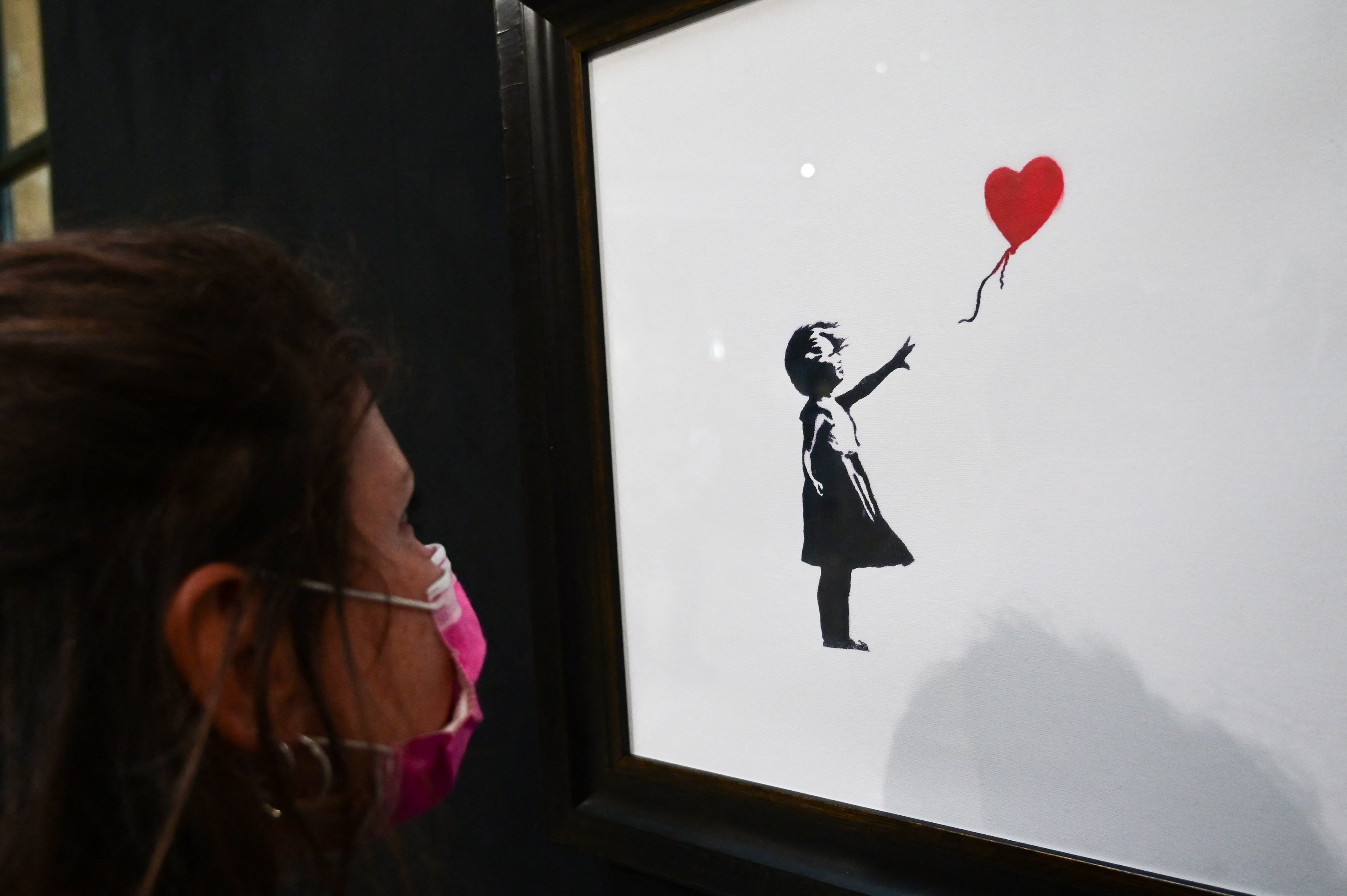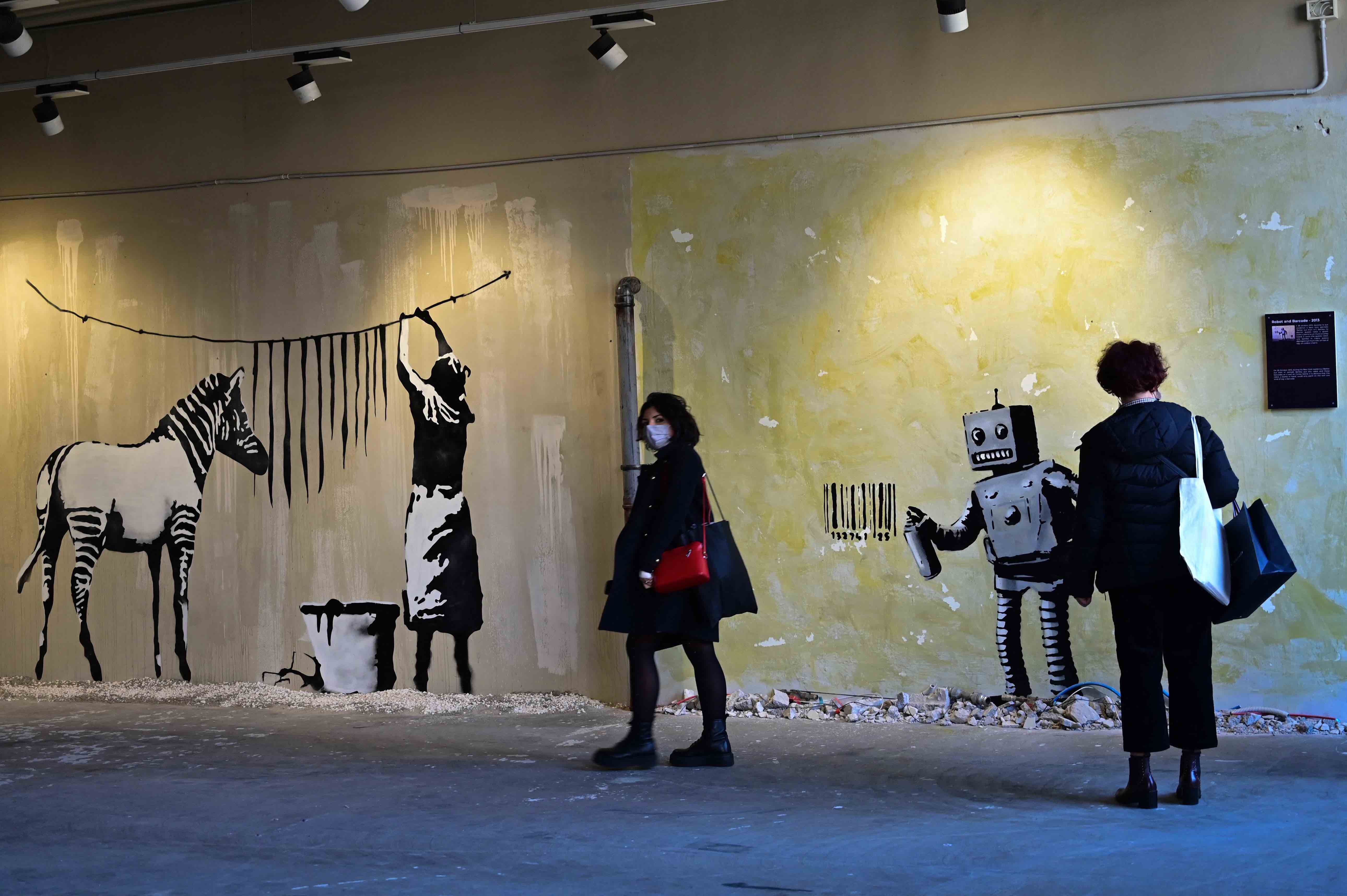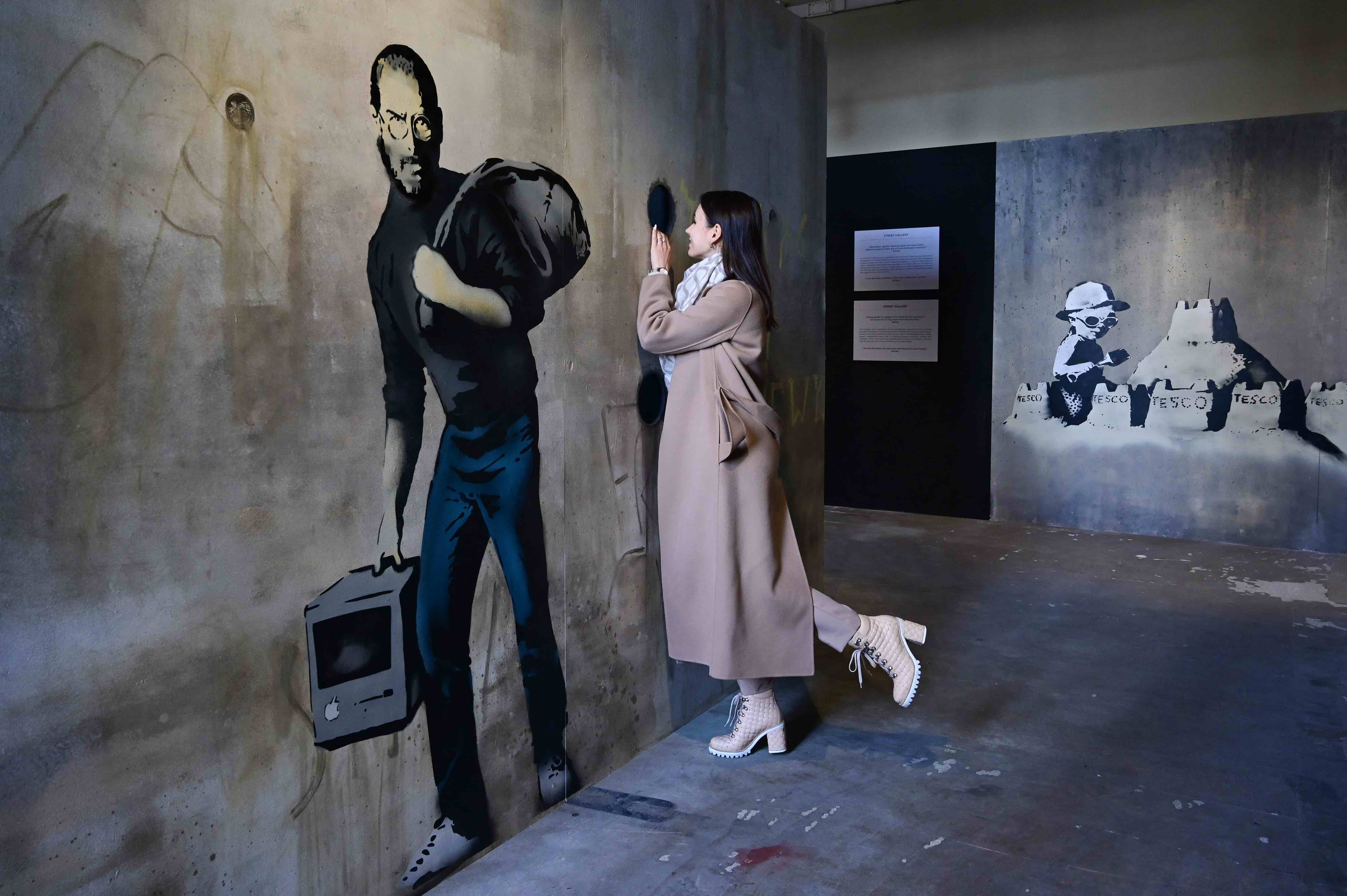Milan train station hosts 'World of Banksy' exhibit
Milan's central train station plays host from Friday to a "World of Banksy," featuring reproductions of provocative works by the British street artist in something akin to their original real-world settings.
The elusive artist's murals these days exchange hands for millions, notably the famous Girl with Balloon, which was sensationally shredded and sold under a new name, Love is in the Bin, for a record £18.8 million (P1.3 billion) in October.
But the aim of the show in the northern Italian city is to make works by Banksy—whose identity is said to be known only to a handful of friends—again accessible to a wide audience.

"Most of his works have been destroyed, covered up, stolen, sold, so they are no longer directly visible to the public," the curator of the exhibition, Manu De Ros, told AFP.
More than 130 murals and silkscreens are on show in the train station until Feb. 27, set on backgrounds created by young graffiti artists and students that hark back to their original surroundings.
"We have reproduced the walls on which Banksy painted, the bricks, concrete, the dirt of the roads, the pollution," De Ros said.
The exhibition is ticket-only and in a closed off area, but some noise from the train station filters through, giving visitors a sense of the streets on which the works first appeared.
There are reproductions of classic works like Flower Thrower, showing a masked protester hurling a bunch of flowers that first appeared on a wall in Jerusalem, as well as more recent pieces.

There is Aachoo, a sneezing lady who appeared at the start of the coronavirus pandemic, or another on the wall of a former British jail that once held playwright Oscar Wilde, depicting a prisoner escaping with a typewriter.
De Ros said he hoped it would cause some of the thousands of people who pass through the station each day to stop and think. And what does the artist think?

"Banksy never directly authorizes exhibitions that he doesn't organize himself, that's a rule, but neither does he prohibit them. He doesn't stop us," the curator said.
"This allows us to believe, perhaps a little presumptuously, that the work we do is appreciated. This also allows Banksy to spread his message even more widely." (AFP)


